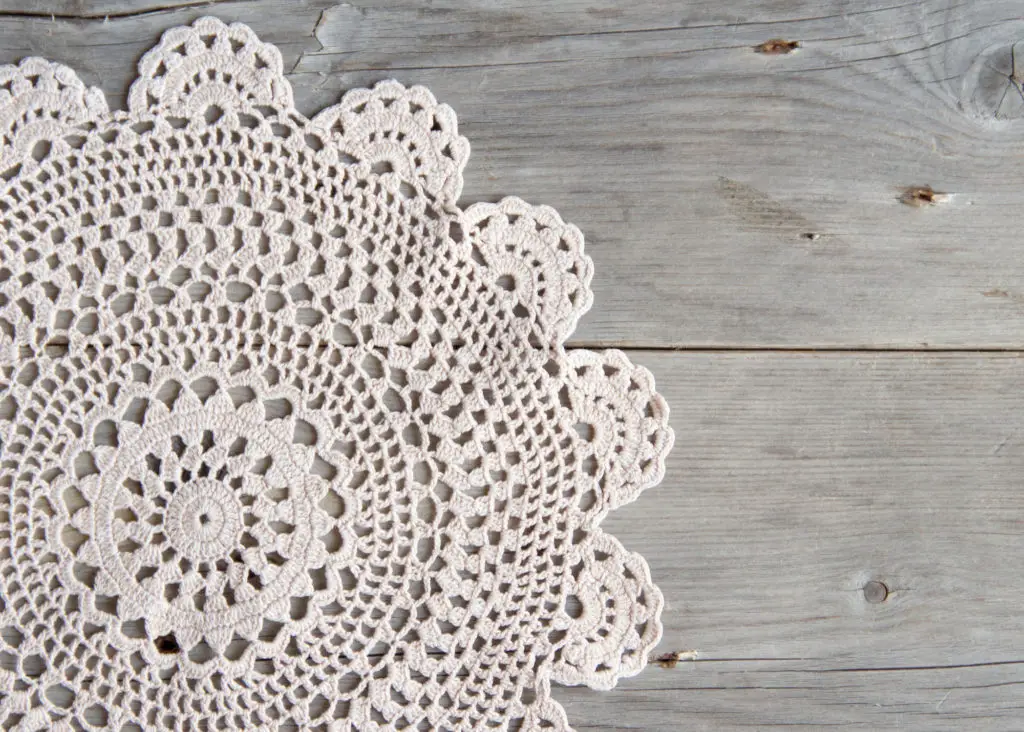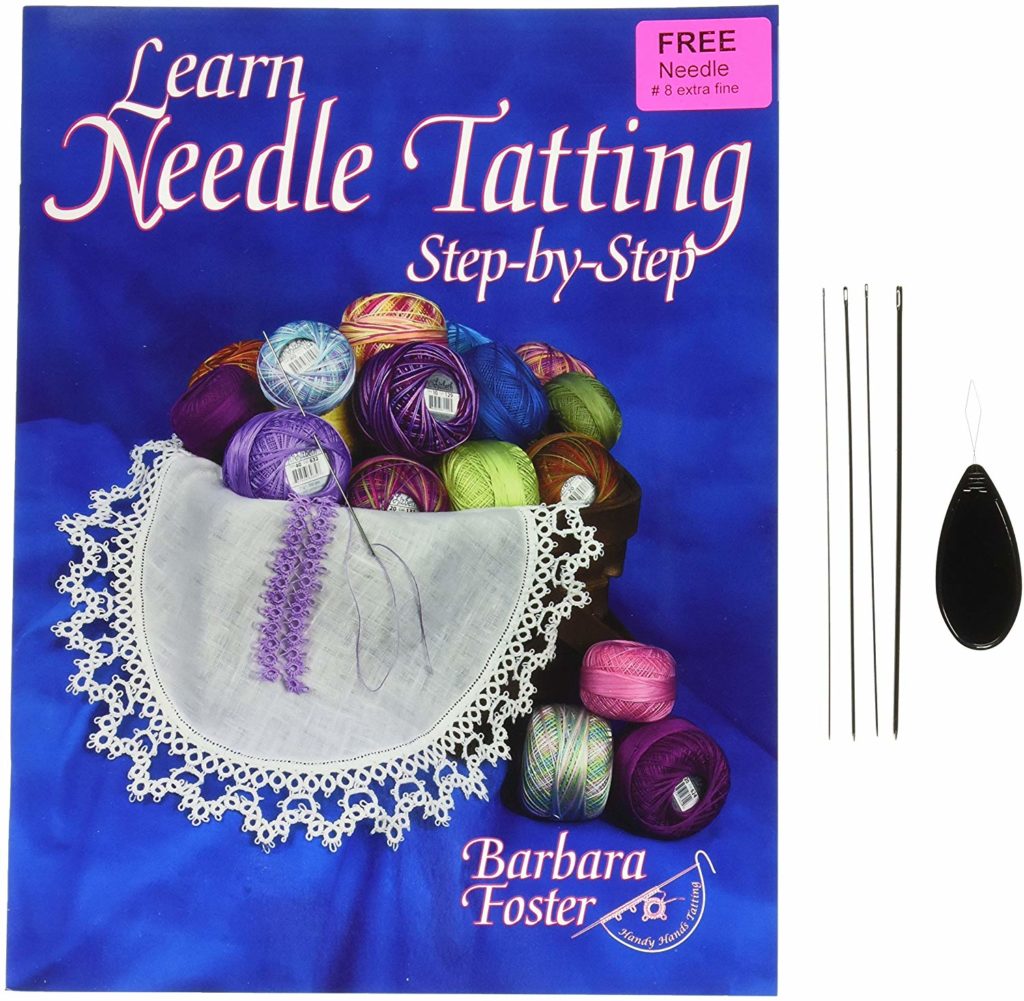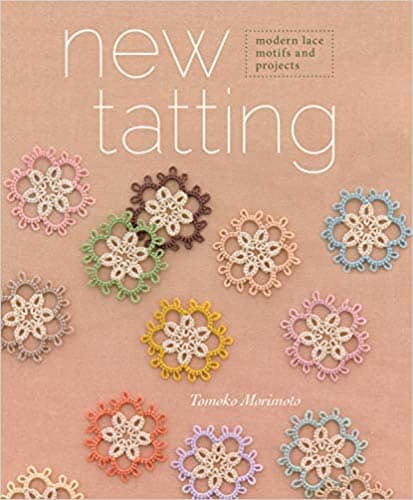What Is Tatting And How Can I Get Started?
If you love needlework and crochet and want to take up a new craft, learning how to make tatted lacework may be just the thing!
If you wonder what it takes to get started, keep on reading this guide, where I explain what tatting is, what supplies you need to begin, and the best place to learn how to make these delicately stunning creations.

What is Tatt Work?
Tatting is a type of vintage lacework made by knotting thread in a series of patterns. If your hobbies include sewing, embroidery, crewel work, crochet, or knitting, then adding this technique to your crafting skills will be an enjoyable endeavor.
The lacework you create will have beauty, weight, and texture that add richness to any project that you will never find in commercially-made products.
Basic stitches
Like other sewing crafts, tatt work has some basic core knots you need to learn when you begin such as:
- Half-hitch
- Square
- Double-hitch
- Picot
You make a basic knot or needle stitch, and form them into a pattern using chains, loops, and rings.
Common projects
Every level of tatter can create projects such as jewelry, doilies, ornaments, appliques, and decorative trims using the methods they learn.
The only thing stopping a crafter from making up new and exciting designs is their creativity and skill level. The more you practice your tatt-working skills, the more professional your projects will turn out.
Tatted Craft Styles
There are several different types or styles of tatt work that incorporate the use of different tools.
Next, let’s detail each style so you can understand the tools that are necessary to complete projects and how easy or difficult that style is, especially for beginners.
Tatted work using a shuttle: This tatt style resembles the original version of knot-working craft skills sailors use to fix fishing nets. The shuttles for tatted lacework are much smaller, and the threads are thinner and more decorative.
A cord or thread winds onto a spool on the shuttle. The tatter uses their hands to wrap the thread and manipulate the shuttle through the knot pattern to make a lacework design.

Using a shuttle can be hard for many people, especially those with arthritis or other joint issues, since holding the shuttle while working on the knots can become tiresome.
Shuttles come in a wide range of sizes, colors, and designs. It takes trial and error to find the shuttle that suits you best, so don’t let the first shuttle you tatt with frustrate you if you find it hard to use.
Keep testing out various shapes until you find one that feels good in your hands, and you can work effortlessly. If you still find using a shuttle difficult, consider going with the tatt needle, which I discuss in the section below.
Needle tatting: This style uses a needle stitch in place of a shuttle to make knots. Because a needle is much thinner than a shuttle, many crafters find needle tatting less stressful and more comfortable to manipulate through the thread pattern.
The needle is long and has an even thickness from tip to eye. The end of the needle is blunt so that you won’t prick your fingers. Needle size correlates to the diameter of the thread you are using for your lacework.
Needle tatting projects require separate lengths of thread to use for making the knots since there isn’t a continuous length available as you find wound on a shuttle.
Most lacework projects that involve the addition of beading use the needle method as it makes stringing them onto the thread much more manageable.
Crochet-tat: This style is a blend between tatted lacework and crochet, using a small crochet hook to manipulate the thread as you form your knots.
Many times, the hook appears to be a long blunt needle with a tiny hook at the end, much like the needle tat style.
Many people like the creativity this style of tatt work offers, and the ease of grabbing threads with the little hook. Many people combine the use of the hook and a regular needle stitch to work efficiently.
Supplies You Need to Tatt
The wonderful thing about taking up tatted crafts is the small number of supplies you need on hand which are:
- Thread
- Scissors
- Shuttle
- Needle
All of these supplies can fit into a small box or bag, which makes it easy to store and carry around with you so you can work on projects anywhere.
Of course, you may build up quite a stash of threads in various colors and thicknesses, so having a nice organizational rack or caddy is very helpful to keep them tangle-free.
How to Learn Tatted Techniques
Tatt work expertise requires patience, dedication, and repetition of needlework knots until you become comfortable with the craft.
Once you do master the techniques, you will find making lacework projects to be relaxing and meditative as you watch the pattern appear before your very eyes.
There are two great ways to learn tatt working skills, each with their benefits and disadvantages, so let’s look at each one to determine which method would work best for you.
Online tutorials
There are many free tutorials online that explain and demonstrate the tools and steps necessary to create tatted projects for beginners or experts. Look for videos that provide close-up, slow-motion tutorials of knots, which make it much easier to grasp the proper technique.
Trying to follow a step-by-step project by an expert tatter may leave you struggling to keep up even after you pick up the basic skills.

What I like the most about online tutorials is the range of tips you glean from just watching lacework projects come to life. It’s also convenient to be able to turn to a video to refresh your memory when it comes to a specific knot or design that is causing you grief.
You can learn to tatt only from online tutorials, but it will take more practice and patience to perfect your skills.
In-person classes
The best way for you to learn to tatt is to find a local tutor who offers classes. Investing in an in-person, hands-on course enables you to learn the best techniques as well as pick up all the tips and tricks an experienced tatt-work teacher can share with you.
Direct learning means you can ask questions as they arise and can see precisely the thread manipulation to make knots correctly.
A general search online for teachers in your area is a great way to locate someone who can show you how to master the knotting and design techniques tatt work requires.
Many online tatters who post articles or videos offer listings of people across the country and world who are willing to teach the craft to interested parties.
Often, there are local sewing or craft guilds that have members skilled in the art who would be willing to mentor you one-on-one. You can also put in an inquiry at senior centers for people who may wish to share their tatt knowledge with you.
Conclusion
Learning to tatt not only allows you to create unique lace projects people will cherish but also enables you to pass this old-world skill on to future generations.
Tatting is a wonderful hobby that delivers gratifying results, so give it a try and put your creative skills to the test!

